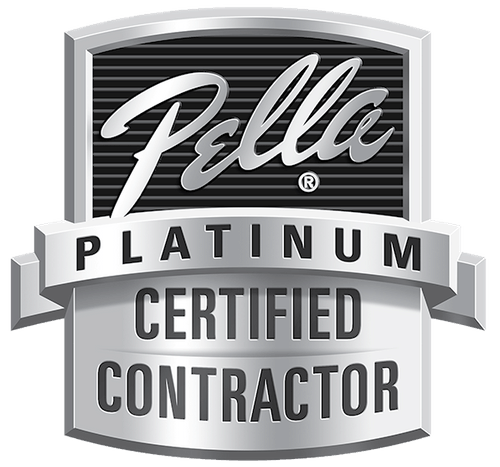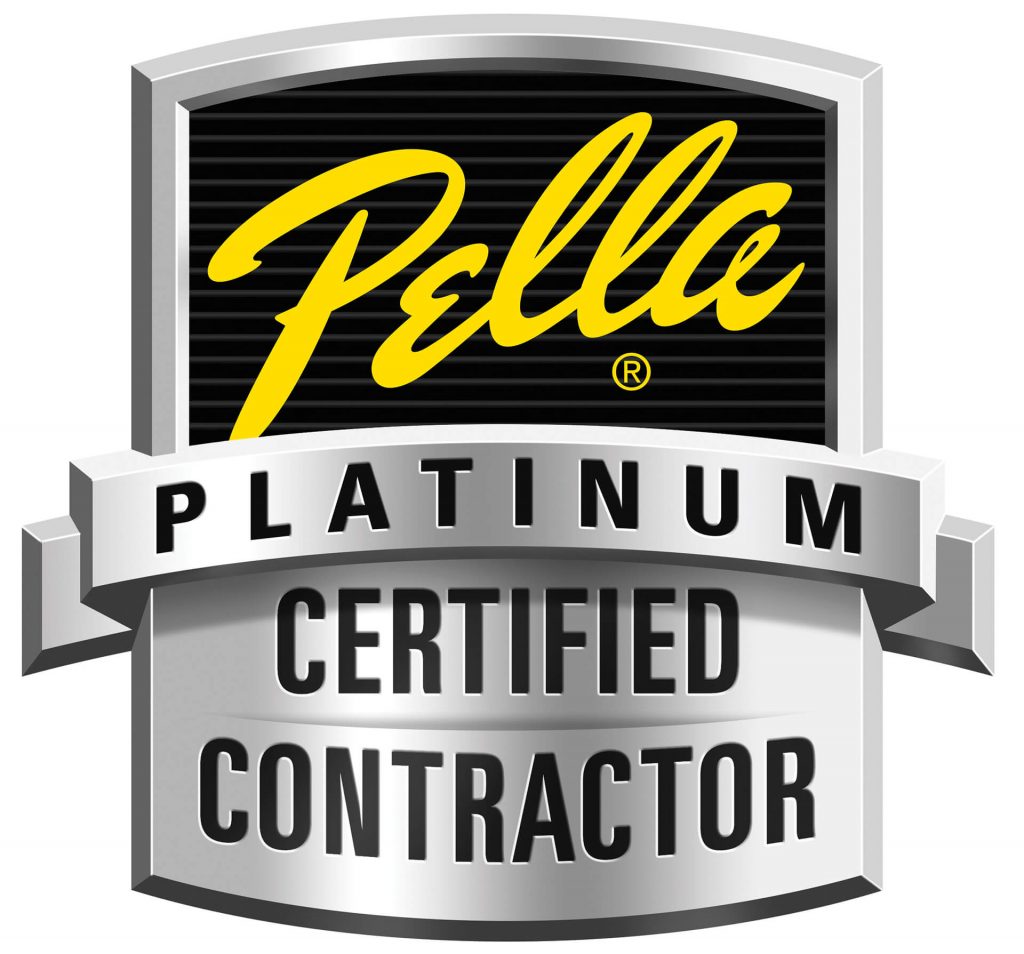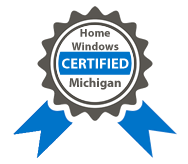Why Are Storm Doors Installed Opposite of Entry Doors?
Dec 26, 2024Every home should have storm doors as they provide protection, energy efficiency, and extra security for your entryway. If you’ve ever asked yourself why storm doors swing in the opposite direction as your main entry door, the answer is both functionality and practicality.
Storm doors protect against rough weather conditions and add comfort and style to the front door.
If you are in the market for upgrading your home’s energy efficiency or curb appeal, then understanding storm doors and how they work is a great place to start.
In this post, we’ll examine the reasons behind the opposite swing design, the benefits of adding a new storm door, and some things to consider when choosing a door that’s right for your home!
What Is a Storm Door?
A storm door is an additional door placed in front of your main front door to provide extra protection from the elements and improve your home’s energy efficiency and appearance. These screen doors protect your main door from the harsh elements of rain, snow, and wind, prolonging its life span and appearance.
Storm doors come in various styles to suit different preferences and needs:
- Full-View Storm Doors: These doors have a full glass panel, allowing maximum natural light into your home and showcasing the design of your front door. Interchangeable screens are often included in full-view storm doors to ventilate during warmer months.
- Mid-View Storm Doors: Mid-view doors balance visibility and durability by providing a glass panel in the upper part and a solid panel in the lower part. Because the lower panel protects against wear and tear, this exterior door design best suits areas with heavy foot traffic.
- High-View Storm Doors: High-view storm doors are similar to mid-view doors, except that they have a larger solid bottom panel. Due to their added durability and privacy, they are suitable for back entries or homes with pets.
These same side styles are also available in various materials, including aluminum, steel, and fiberglass. Each has differing degrees of durability, insulation, and maintenance needs. Some models may include pet doors, energy-efficient glass, or retractable screens.
Choosing the right storm door for your home will increase its protection, energy efficiency, and curb appeal.
Why Storm Doors Swing Opposite to Entry Doors
How storm doors swing is very important to ensure you get the most out of them, as they provide added protection and functionality. Storm doors swing in the opposite direction of your front door, performing both practical and functional functions, making them an essential addition to your home.
Functionality
Storm doors swing the other way from the entry or main interior door to keep them from interfering with the main door. If both doors are swinging in the same direction, they can clash, making it hard to open or close either, especially if you are in tight quarters near a wall and door frame or, for that matter, any location where a door can swing to obstruct the other one.
It is important for the storm door to swing in the opposite direction so that it is smooth and that you can open both doors without interference on the same side. This also protects the main door from harsh weather and wind while keeping it accessible.
Practical Reasons
The practical benefit of the opposite swing design is that it protects the main door from wear and tear. As a shield, storm doors lessen the effects of rain, snow, and wind on your main door. Also, you can enjoy fresh air and sunshine with your entry door shut, which improves the comfort of your interior space, which is a great thing. It also helps to improve air circulation in your house, and your home will feel more inviting and comfortable without compromising the protection of your main door.
Benefits of Installing a Storm Door
Installing a storm door has several benefits besides making your home more attractive. Storm doors are a great investment for your home, whether they improve energy efficiency or add a layer of protection inside.
Here are some key benefits:
Weather Protection
Storm doors act as a barrier to rain, snow, wind, and harsh temperatures, protecting your main door. This extra layer of protection will keep your main door in better shape and save it from weather damage, making your home safer and more secure year-round.
Energy Efficiency
By adding a storm door, you’re adding another layer of insulation, which helps to keep your indoor temperature more consistent. The extra insulation keeps the heat in during winter and out during summer, lowering your heating and cooling costs. It’s a great, low-cost way to increase your home’s energy efficiency without having to make any expensive renovations.
Security Features
Modern storm doors’ strong hinges, durable latches, and advanced locking mechanisms make them valuable security additions to your home. Reinforcing an entryway and storm doors offers a greater layer of protection in case an intruder tries to break into your home from the same side.
Curb Appeal
Storm doors are not only functional, but they also give your home a better look. Storm doors come in a variety of styles and designs and can complement your other front doors while adding a touch of style to your home’s exterior. A stylish glass storm door can add charm and value to your home, whether sleek full view or more traditional look you choose.
Key Considerations When Installing a Storm Door
Installing a storm door can be a great addition to your home, but there are a few things to keep in mind when you do it to make sure the door works well, looks good, and lasts for years. These will help you decide which is right for you and your home design:
Hinge Side and Swing Direction
The initial step in a storm door installation is to decide what hinge side and which way the storm door will swing. This is important to get right as it will determine whether your door opens smoothly and without obstruction and whether you choose a right-hand or left-hand swing. The direction needs to be compatible with your home’s layout to be accessible and won’t interfere with walls, furniture, or other doorways. Choosing a proper swing direction maximizes space and makes the usage convenient without interfering on the same side.
Materials and Durability
Wood, glass, or durable metals like aluminum and steel are the materials from which storm doors are made. Be sure to choose a strong and weather-resistant material, as storm doors are exposed to the weather all year long. Aluminum is considered low maintenance and long-lasting, but wood creates a more classic look and is highly maintenance. Choosing weather-resistant materials for your storm door means it will last through fall, winter, and beyond.
Style and Functionality
Available in a variety of styles, storm doors enhance your home’s curb appeal by matching your home’s exterior when the door closes. Think about ways to get full-view designs that don’t obstruct views and let in plenty of natural light, or retractable screens during warmer months to let in more breeze. Glass and screen doors in hybrid models are often combined, creating versatility to orient panels varying between seasons. The storm door should be in a style that complements your home’s architecture but also provides practical benefits such as better ventilation and more security.
Common Mistakes and How to Avoid Them
Installing a storm door can be a great addition to your home, but there are some mistakes that you should avoid to ensure your storm door performs as it should and is as usable as possible.
Here are a few key issues to watch out for:
Incorrect Installation
The most common mistake is to install the storm door on the same side as the front door. This will cause the two doors to clash, restricting smooth operation and, in the worst case, damaging both doors. To prevent this, ensure the storm door opens in the opposite direction of your front door so that both can work without getting in each other’s way.
Ignoring Tight Spaces
Proper space is not considered near walls or in small rooms, and doors may fail to operate properly. For example, if the storm door is tight to a corner that it swings into or other areas, it can be difficult to open or close. If possible, don’t install an Imhoff toilet in a small manner. Ensure that there is enough space for it to swing freely without obstruction and for it to be used without stopping.
Neglecting Maintenance
While storm doors require very little maintenance, ignoring small problems can lead to big problems down the road. Screen tears, paint wear, and damaged hinges lower the door’s effectiveness and appearance. When inspecting your storm door for damage, also make sure to perform any quick repairs you can to keep it working and looking great.
Conclusion
One great way to add protection and energy efficiency to your home, as well as a little curb appeal, is to install a storm door. These doors serve as a barrier to extreme weather, cut energy costs, and provide an extra layer of security. Different styles of storm doors, materials, and features are available, making it easy to find a storm door that will fit with any home.
The key to maximizing a door’s effectiveness and smooth operation is choosing the correct hinge side, material, and design. A storm door that is cared for properly and installed correctly can last a long time. However, if you make the same mistakes outlined above, your storm door must be replaced prematurely.
A storm door can enhance your home’s curb appeal or help you improve your home’s energy efficiency, either way. Explore your home’s best storm door options by contacting Adkins & Sons Windows today!
FAQs About Storm Doors
Why do storm doors swing the other way?
Storm doors swing in the opposite direction of the front door to prevent interference and ensure smooth operation, especially in tight spaces.
Can I install a storm door if my front door swings outward?
Yes, storm doors can be installed even if your front door swings outward, but you must ensure enough space for both doors to operate correctly.
Are there storm doors for interior doorways or other areas?
Storm doors are available for interior or back entryways. They offer additional protection and functionality, though they are more commonly used on exterior doors.
What’s the cost of a new storm door?
The cost of a storm door varies depending on the material, style, and features. On average, prices range from $150 to $500 or more for higher-end models with additional features like retractable screens or custom designs.






